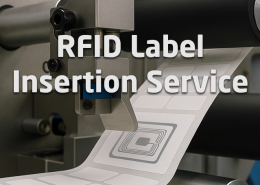Radio-Frequency Identification (RFID)
RFID is an underlying technology that allows RFID-enabled tags and devices to communicate with other RFID-enabled tags and devices via electromagnetic fields (RF fields). RFID is a low-bandwidth technology meant to be used for small communication sessions and low data transmissions, often a unique identifier and a small amount of data stored in memory. There are two types of RFID and three different frequencies; each with its use case, benefits, limitations and costs. RFID is one of the primary technologies behind Connected Things via NFC and UHF RFID.
Contents
RFID Types
There are two types of RFID; passive and active RFID. Within the usage of Connected Things; passive RFID is much more common.
- Passive RFID tags are powered by harvesting power from the RFID device; they simple components and are relatively cheap
- Active RFID tags have their own power source, such as a battery and are inherently more complex and more expensive
RFID Frequencies
There are three RFID frequencies; corresponding to different frequencies of the electromagnetic spectrum the signal operates at. Tags and devices are designed to operate on one of these frequencies and are unable to work with the other frequencies.



